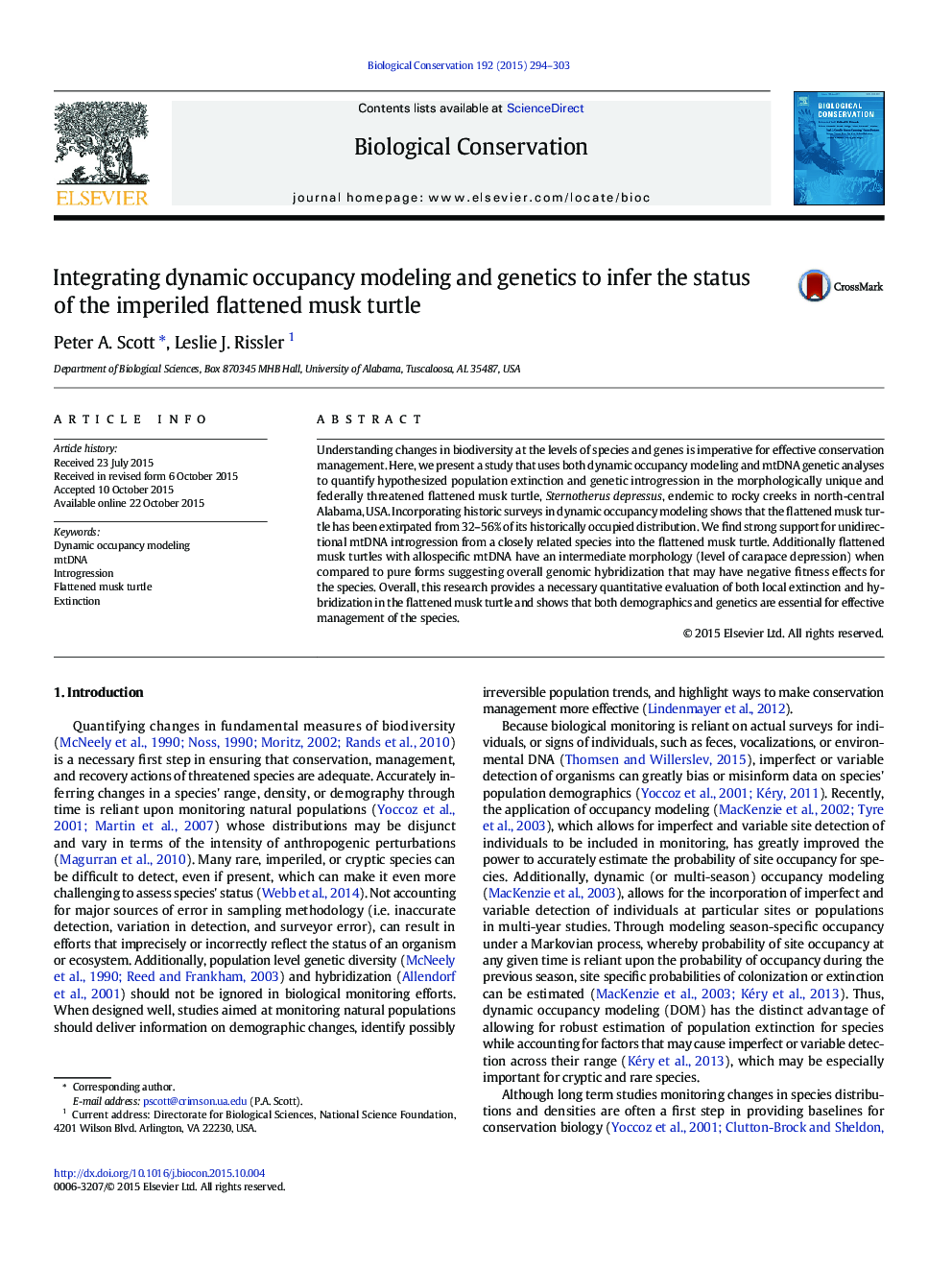| Article ID | Journal | Published Year | Pages | File Type |
|---|---|---|---|---|
| 6298593 | Biological Conservation | 2015 | 10 Pages |
Abstract
Understanding changes in biodiversity at the levels of species and genes is imperative for effective conservation management. Here, we present a study that uses both dynamic occupancy modeling and mtDNA genetic analyses to quantify hypothesized population extinction and genetic introgression in the morphologically unique and federally threatened flattened musk turtle, Sternotherus depressus, endemic to rocky creeks in north-central Alabama, USA. Incorporating historic surveys in dynamic occupancy modeling shows that the flattened musk turtle has been extirpated from 32-56% of its historically occupied distribution. We find strong support for unidirectional mtDNA introgression from a closely related species into the flattened musk turtle. Additionally flattened musk turtles with allospecific mtDNA have an intermediate morphology (level of carapace depression) when compared to pure forms suggesting overall genomic hybridization that may have negative fitness effects for the species. Overall, this research provides a necessary quantitative evaluation of both local extinction and hybridization in the flattened musk turtle and shows that both demographics and genetics are essential for effective management of the species.
Keywords
Related Topics
Life Sciences
Agricultural and Biological Sciences
Ecology, Evolution, Behavior and Systematics
Authors
Peter A. Scott, Leslie J. Rissler,
